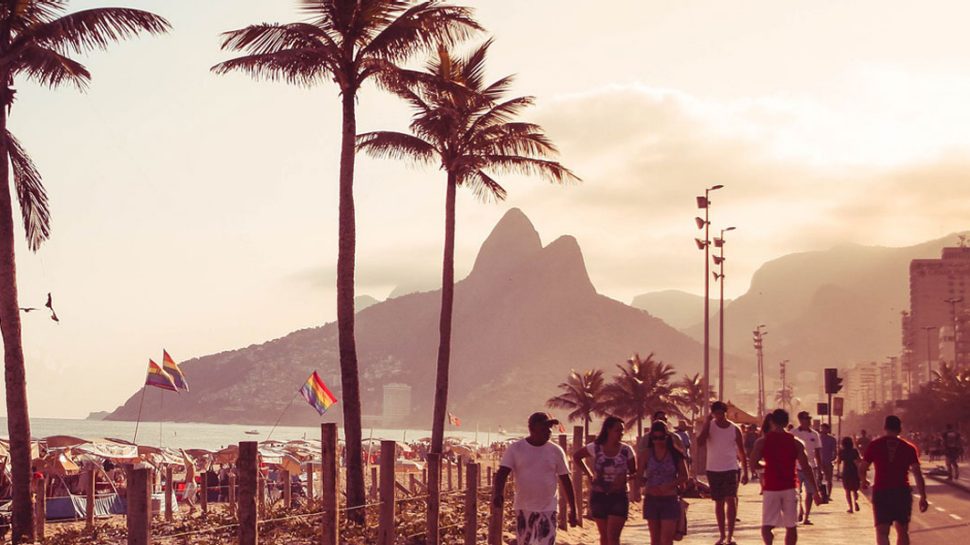Rio de Janeiro guide – what not to miss
The spin of the globe for this, the summer games of the 31st Olympiad, lands us in Rio de Janeiro, Brazil. The B in the economically aligned BRIC countries, Brazil, along with Russia, India and China, is a newly minted major player on the world stage.

Travellers of course are no strangers to Brazil’s assets. The adventurous and fun-seeking have flocked there for decades, most famously for Carnivale (the samba infused party that throbs throughout the city’s streets), the 2014 FIFA World Cup, and its famed beaches.
It’s predicted the city will see 480,000 visitors this August.
This August, when the weather in Rio is at a perfect 19-25ºC on a daily basis, the world will be watching 32 venues across the city, as well as five cities holding football fixtures: Belo Horizonte, Brasília, Manaus, Salvador and São Paulo.
Aside from cheering on the green and gold, be sure to explore the surrounding areas in Rio during your visit.
The areas surrounding Rio’s sporting venues
The venues are grouped into four areas within Rio de Janeiro: Maracanã, Deodoro, Barra, and Copacabana.
The main stadium in Maracanã (called the Maracanã) will host the opening and closing ceremonies and key football fixtures, with nearby Engenhão holding the athletics.
West of Maracanã, you’ll find Deodoro. Deodoro plays host to a number of sports, with venues for equestrian, shooting, aquatics, hockey, mountain biking, white water sports and BMX biking all in walking distance of each other. The nearest neighbourhood of interest in this less-visited part of town is Marechal Hermes – an early example of planned housing, with the modernist Armando Gonzaga Theatre a testament to the promise of cultural facilities for the working classes. Deodoro can be reached by bus or rail, with Vila Militar the closest station to the venues and home to a station house which dates from the early 1900s and mixes a baby yellow façade with gothic revival features.
South of Deodoro toward the coast, activities condensed around Barra include the speed cycling, tennis, handball and swimming. The most interesting structure in this group is the temporary home of the handball tournament. Named the Future Arena, it was designed in the ‘nomadic architecture’ technique that will see it dismantled and used to construct four public schools.
The famed Copacabana beach is flanked at either end with beach volleyball at the eastern end and the road cycling and triathalon best viewed from Fort Copacabana at the western end. The nearby Sambódromo in Santa Teresa – the epicentre of Carnivale – will be the start and finish for the Marathon. The Copacabana area will also host the sailing, at the Marina de Gloria.
Google street view have gone inside a number of the venues and filmed them, so you can take a virtual tour through the facilities.
Offset all that sport with a visit to a gallery or museum
Sporting infrastructure hasn’t been the only subject of investment and grand design in Brazil in the lead up to August. The city’s cultural landscape has been enhanced through new and renewed venues for the display of arts, science and technology.
The Museu de Arte do Rio is set in two buildings side by side. The early 20th century Palacette Dom Joao, is joined to a modernist block with an undulating concrete roof, covering a viewing area from which you can see across the impressive, but polluted Guanabara Bay.
Guanabuara Bay is crossed by the President Costa e Silva Bridge or the Rio-Niterói Bridge, as it’s more commonly known, is an eight lane13km stretch of concrete. The MAC de Niterói, where the Louis Vuitton show was staged is still closed for refurbishment but due to open before August so keep an eye on their website if the contemporary arts are more your thing.
Nearby is the brand new Museu do Amanhã (Museum of Tomorrow) which focuses on science and technology and features shifting roof wings covered in solar panels. The museum gives visitors an opportunity to explore future scenarios for the planet through pressing subjects like over-population, mass consumption, climate change and rapid advances in technology.
Even more architecturally impressive, is the Museu da Imagem e do Som (Museum of Image and Sound) whose modernist exterior, light-filled interior and enviable position, bang on Copacabana beach, can’t be beat.
There are a number of innumerable smaller galleries, theatres and cultural and dance events listed on the English language Rio Culture map. To access it on the move, download their app before you go, and check out some of the grassroots artists and performers Rio has to offer.
Send postcards to anyone you like, anywhere in the world, with your own travel photos. Try the Postcards app.
